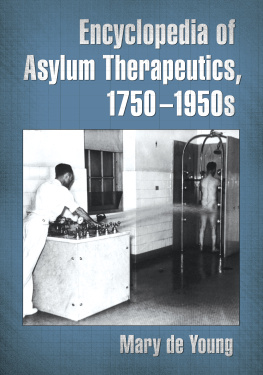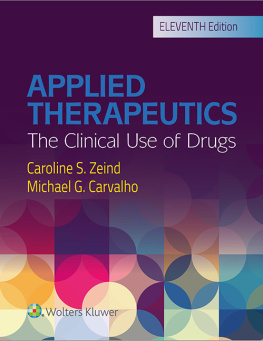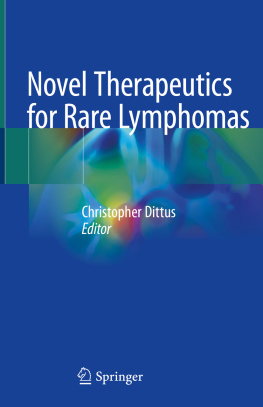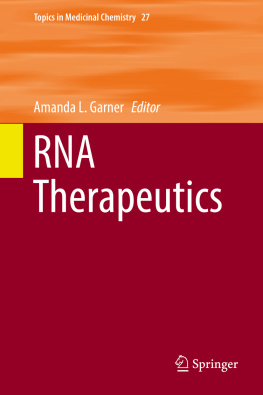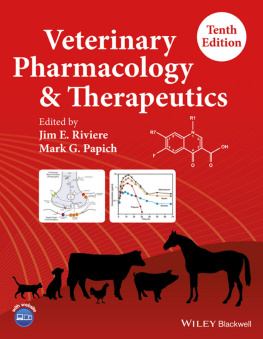
Also by MARY DE YOUNG
AND FROM MCFARLAND
Madness: An American History of Mental Illness and Its Treatment (2010)
The Day Care Ritual Abuse Moral Panic (2004)
The Ritual Abuse Controversy: An Annotated Bibliography (2002)
Child Molestation: An Annotated Bibliography (1987)
Incest: An Annotated Bibliography (1985)
The Sexual Victimization of Children (1982)
Encyclopedia of Asylum Therapeutics, 17501950s
Mary de Young

McFarland & Company, Inc., Publishers
Jefferson, North Carolina
LIBRARY OF CONGRESS CATALOGUING DATA ARE AVAILABLE
BRITISH LIBRARY CATALOGUING DATA ARE AVAILABLE
e-ISBN: 978-1-4766-1788-6
2015 Mary de Young. All rights reserved
No part of this book may be reproduced or transmitted in any form or by any means, electronic or mechanical, including photocopying or recording, or by any information storage and retrieval system, without permission in writing from the publisher.
On the cover: Patient undergoing hydrotherapy treatment (The National Library of Medicine)
McFarland & Company, Inc., Publishers
Box 611, Jefferson, North Carolina 28640
www.mcfarlandpub.com
To Joe Verschaeve because he knows why it matters.
Acknowledgments
I would like to offer a sincere thanks to colleagues and friends who offered advice and support during the writing of this book. I am particularly indebted to Bob Hendersen, Joe Verschaeve, Michael and Mary Louise Ott, Jennifer Stewart, and Erika King and Robert Beasecker.
The librarians at Grand Valley State University are owed a special thanks for hunting down and retrieving often obscure reference material, and then never raising an eyebrow about the sometimes, shall we say, unsettling content.
I learned so much from my visits to the Het Dolhuys, the national museum of psychiatry, in Haarlem, Netherlands, and to the Medicinsk Museion in Copenhagen, Denmark, which has an interesting exhibit on therapeutic interventions used in the countrys asylums. The Glore Psychiatric Museum in St. Joseph, Missouri, was a wonderful place to spend a long, rainy afternoon, and I want to thank Sarah Elder, curator of collections, for allowing me to take photographs and publish them in this book.
Preface
A book or a set of books giving information on many subjects or on many aspects of one subject and typically arranged alphabetically. That venerable screed The Oxford Dictionary so defines encyclopedia.
The Encyclopedia of Asylum Therapeutics, 17501950s, meets all of those definitional standards. It is a book, although nearly verbose enough to be a set of books; it contains multiple perspectives on a single topic, in this case two centuries of the treatment of the insane; and it is alphabetically arranged, first by each primary therapeutic and then by any subentries that further elaborate upon it. Readers will find a list of references after each major therapeutic entry that is relevant to it, as well as to any and all of its subentries.
The book aspires to also capture the essence, the spirit, of encyclopedia. The term is from the Greek, meaning a circle of learning that can opened, indeed must be opened, by new knowledge. The question here is, whose knowledge? This encyclopedia is predicated on the recognition that there are multiple sources of knowledge about asylum therapeutics, and multiple ways in which knowledge has been, and is still, derived from wisdom and socially constructed from information and experience. At the same time it recognizes that certain types of knowledge, and certain sources of it, have been and are still privileged over others. Thus historical archives are filled with papers and reports authored by asylum physicians who, with various degrees of clarity and reflexivity, discuss therapeutic interventions with their patients. Had this book collected, organized, synthesized and presented only that privileged body of knowledge, a deceptively progressive metanarrative would have emerged: to cure insanity things were tried, mistakes were made, lessons were learned, different and better things were then tried, mistakes were made, more lessons were then learned, ad infinitum.
Privileged knowledge often maintains its privilege by muting, if not silencing, challenges to its hegemony. A deeper spelunking of the historical archives was necessary to recover and then synthesize these quieted bodies of knowledge. The memoirs and memories of treated asylum patients, the reports of investigating and oversight committees, local newspaper reportage, and other subaltern sources were synthesized into the encyclopedic entries of this book, thus inviting readers to read not just along the grain of the metanarrative, but against it.
That is the intent, but what is the content of this book? It is an encyclopedia of asylum therapeutics, a curious topic, perhaps, but one for which a case can be made. Therapeutics are best thought of as interventions through which abstract knowledge is made practicable. Therapeutics link medical knowledge with practitioner skill and with the personal expectations of embodied patients who experience and understand their own maladies in different ways. It is curious, then, that such an important endeavor has not been granted its due of scholarly attention. The present book seeks to redress that oversight.
And it does it in an encyclopedic form. Perhaps a case for that has to be made as well. Despite the appeal of a metanarrative of steady progress in the treatment of asylum patients, therapeutics have proceeded over history in fits, starts and turns. They often have neither a clear beginning nor a definitive end, and certainly not an even spread over the geographic landscape. The inherent urge to impose order was resisted in the compilation of this book in the hope that the discontinuities, disappearances and reappearances, and recycles of therapeutics opens the encyclopedias circle of learning to critical inquiry.
To that end also, the entries herein are narrative in form rather than consisting of a cold recitation of facts. Central to many of those narratives are individuals, more often asylum physicians than not, who loom large. Some of them may have been compassionate, others inquisitive, others simply zealous in their desire to treat insanity, but in the encyclopedic narratives, and to the extent possible, their ulterior motives have been bracketed off. This, too, is in service of opening up the circle of learning to critical inquiry about the various contextsfrom social to professional to institutionalthat influenced the practice of therapeutics, their administration, and the assessment of their effects and efficacy. The bracketing off serves another purpose as well. It goes a little way towards explaining why some therapeutics that should not have worked, seemed to have worked in aiding recovery. If society, science, institution and interaction share a system of beliefs about the nature of insanity, and if the therapeutic intervention is appreciated as a reflection of those beliefs and is expected by all parties to be effective, it very well may be. That is more than a placebo effect. It is, instead, the intimate relationship between structure and agency, contexts and individuals. The encyclopedic entries are intended to invite consideration of that relationship.
The Encyclopedia of Asylum Therapeutics, 17501950s, limits its scope in time and place. The first purpose-built asylum for the insane was constructed in the fifteenth century for the purpose of containment, not treatment. By the mid-eighteenth century, though, and in reaction to changing social and ideological contexts, asylums began to earnestly carry out the dual, and perhaps somewhat contradictory, goals of containment
Next page
